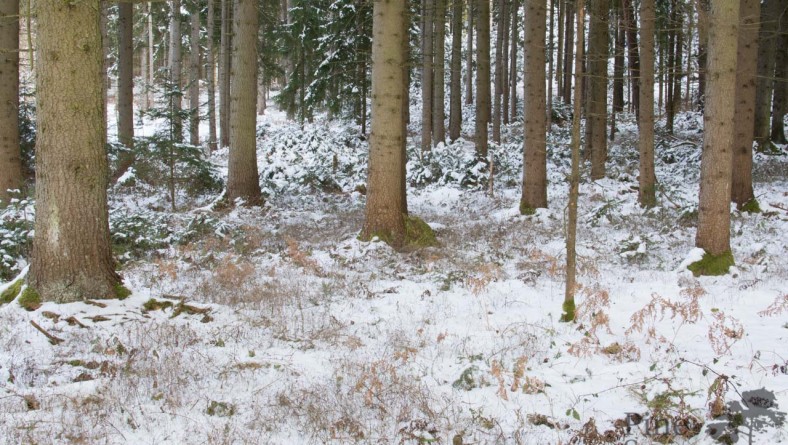Die deutsche Version dieses Review kann im Tacticalforum nachgelesen werden.
Recently I was asked by a reader from the UK if it was possible to take some comparative pictures of Multicam, SloCam and PenCott. After quite some mails we came to the conclusion that I would compare all the patterns which are available to me from these camo families.
As a result of this discussion I gave thought to some basic aspects in regard to camouflage patterns in autumn and winter time, which I would like to mention beforehand, because I know some people are going to immediately shout out in anger that there are dedicated winter patterns out there and that this test is defacto obsolete.
To be honest I could just say: „I did it because I could“ and be done with it. Nevertheless I really don‘t want to appear arrogant. Insofar some thoughts of mine:
- There are not that many armies which hand out winter camouflage to their soldiers. If you get some, then it most likey consists of a simple white coat to wear over the actual uniform. Of course there are always the SF groups that get their toys, but I am talking regular soldiers now.
- Other more trivial reasons are that if you hand out winter camo you technically (!) need matching gear to it, which causes additional costs.
- Of course there are more trivial reasons like climatic conditions. The best winter camo is of no use, if there is no snow. One could argue that some bureaucrat makes a cost benefit calculation and canceled the winter camo.
So let‘s see this from the possible scenario that soldiers get fielded with only one camo pattern. It could be any of the here tested. Either way I found the discussion with J. interesting enough to repeat my camo tests.
Methodological Limitations:
As always I do not make some sort of scientific claim. I rather would like to demonstrate with my limited ressources how different camouflage patterns work outside of their comfort zone, or how universal some patterns really are.
In doing so I tried to create different circumstances:
- Scenario 1: a snowy slope inside of a mixed forest at dawn
- Scenario 2: an open slope in direct sunlight with spots of snow
- Scenario 3: an open forest floor with a closed foliage roof
My thought behind this was that one does not always comes across a „by the book“ cover and happens to find himself in an open field of view. Insofar my three scenarios are displaying not ideal conditions, because there are none in real life.
Another thing worth mentioning: This pictures are not meant to be search pics. Waldo is not in it. All the different cloths are dead center of the pictures so one can identify them. They are cloths after all and not real persons who can postion themselves accordingly. So you will spot them because of the straight lines of the borders.
Patterns used and their meant operational areas:
In this test I used the following patterns – more would have been too much in my opinion.
Multicam – one of the universal patterns of the last years, primarily meant for arid and desert environments.
Multicam Tropic – a modified version of Multicam, dedicated to temperate and jungle environments.
SloCam – the Slovenian version of a universal pattern, which was supposed to be similar to the NATO partners patterns.
PenCott Greenzone – a dedicated pattern for temperate and jungle environments
PenCott Badlands – a dedicated pattern for arid environments (this is version 1 of the Badlands pattern. By now there is an updated version available with higher contrast in the micro, midi and macro elements).
Scenario 1
Snowy slope in mixed forest, at dawn. Distance to camera roughly 20m. Cloth is at chest height, could be regarded as a kneeling individual.
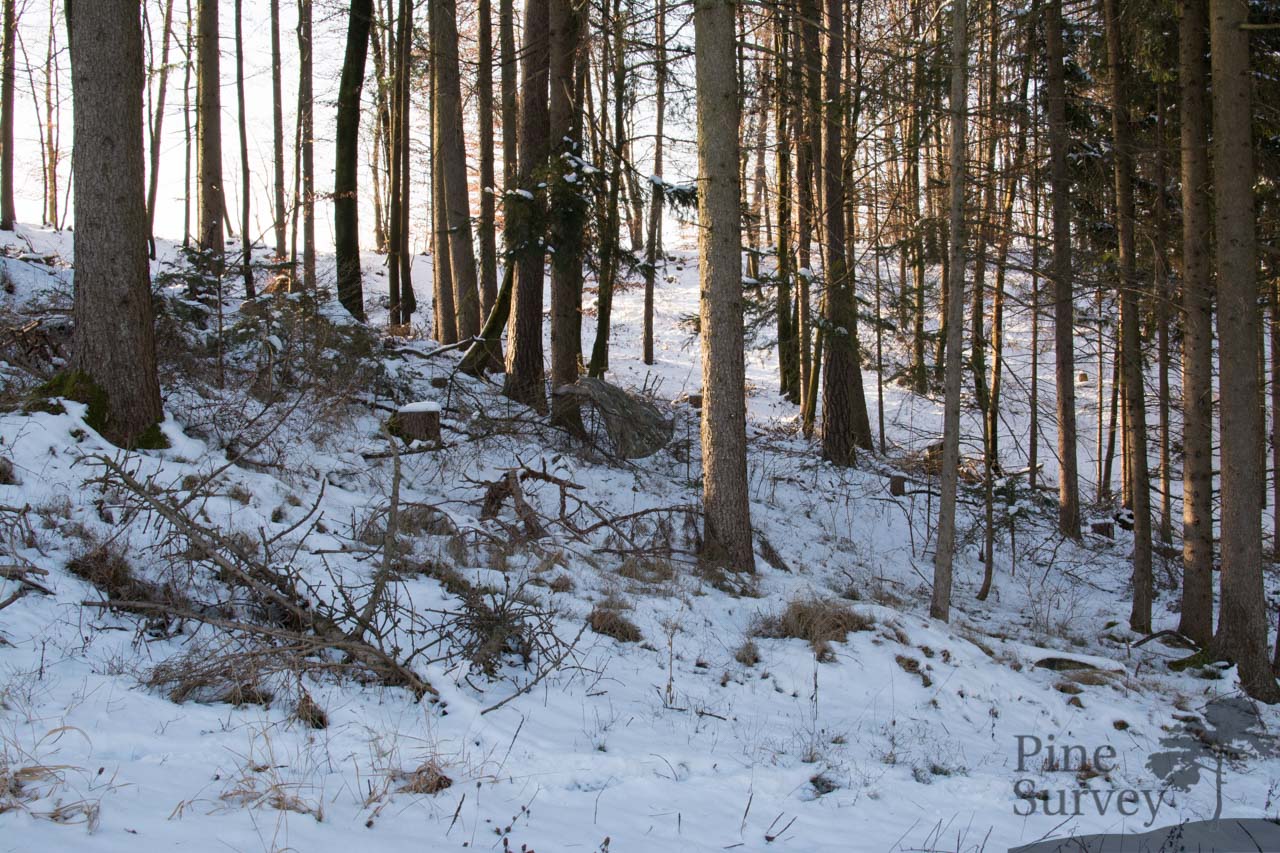
Multicam
Multicam
Under this circumstances Multicam unfolds its effectiveness, which made it famous. The brown and khaki colors correlate with the winter vegetation and the white spots in the pattern adapt to the surrounding snow. Even though Multicam works only partially in spring and summertime in Europe, it certainly does so during winter and autumn.
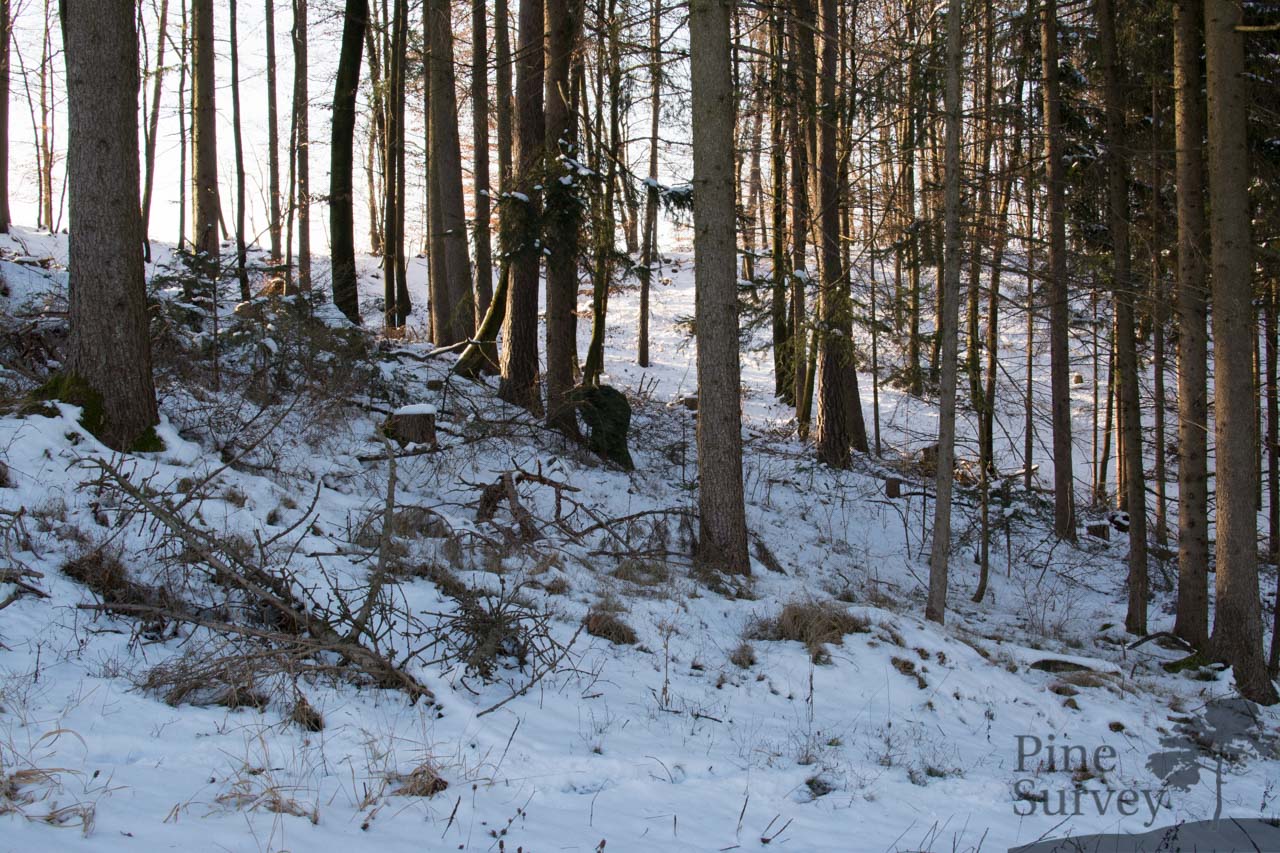
Multicam Tropic
Multicam Tropic
It is a different story with the modified tropic version of the Multicam family. As mentioned before in an other review, the pattern lacks the necessary contrast and blurrs into one giant dark blob which attracts the eye immediately. A reason to include this color variation into the test was the the temperate choice of colors which are working in the European regions during spring and summer – because of this, a soldier might come into the situation of using these in wintertime because he was not fielded with a proper winter pattern.
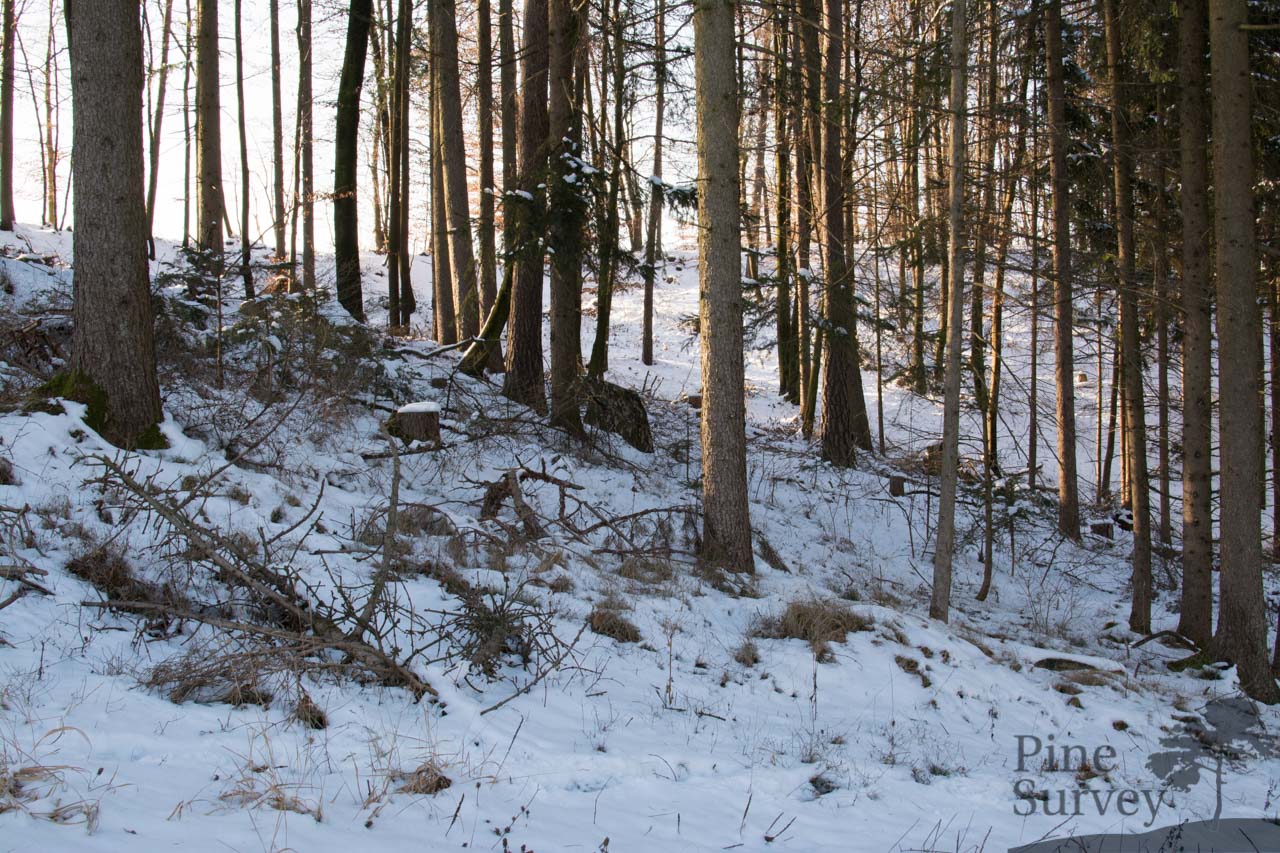
SloCam
SloCam
Slocam comes alive in autumn and Winter for real! Having the colors of the Karst region in mind, the design team of this pattern can really pat themselves on their shoulders if it comes to winter colors. Summer and winter, Slocam works well in all of these months. The contrast of the pattern elements break up the silhouette and the colors are matching the dead vegetation.
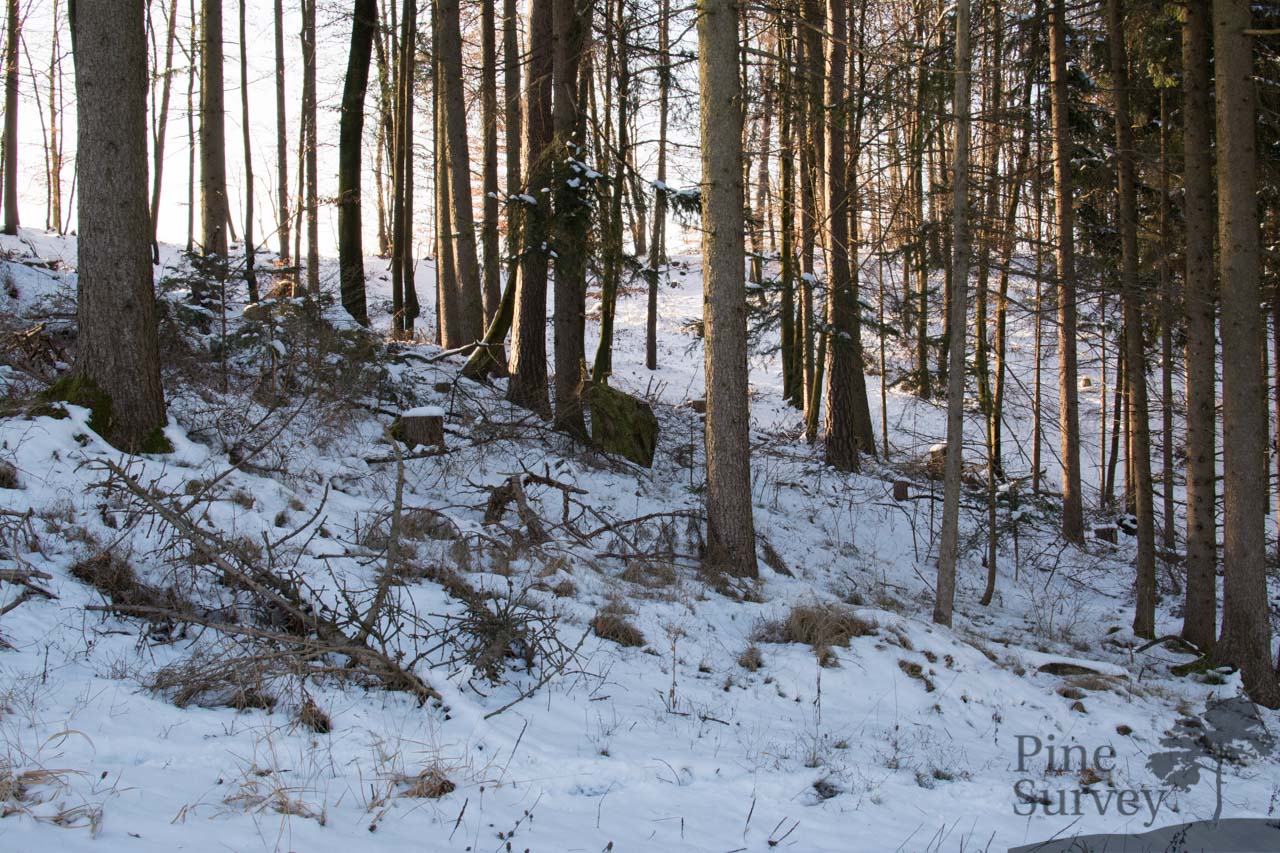
PenCott Greenzone
PenCott Greenzone
Just like Multicam Tropic PenCott Greenzone was not designed for wintertime. Not for nothing you will find a designated snow pattern by Hyde Definition as well as by Crye. What‘s surprising in regard of Greenzone, is the the macro elements ability to break up the silhouette. This in combination with a 40% ratio of brown color tones in the pattern results in a far less out of place feeling for this pattern. Thinking of the toxic like green colors in the pattern, one might think it would stand out much more, but if you look closer one might think that the brown areas are in fact branches. So it is not ideal, but not as bad as Multicam Tropic.
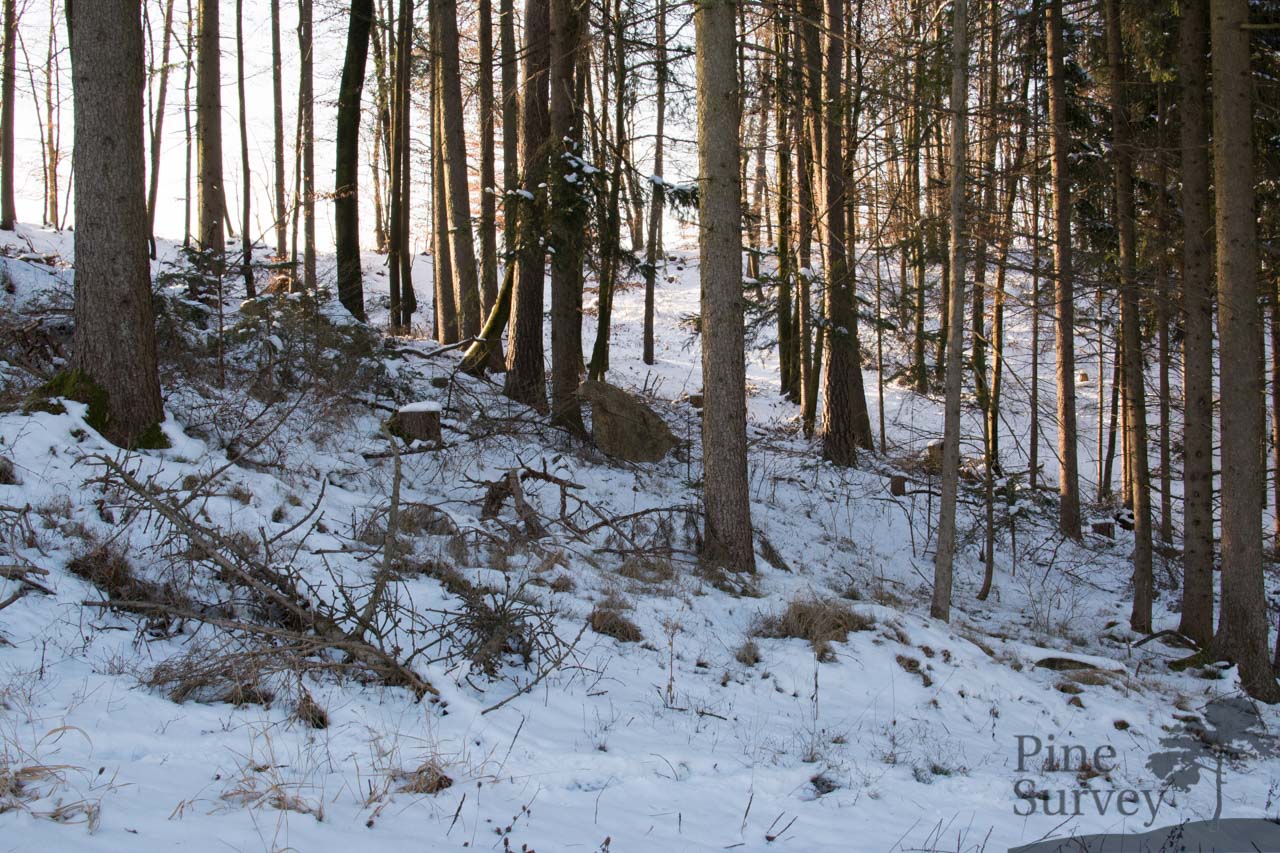
PenCott Badlands
PenCott Badlands
PenCott Badlands blends in like Multicam in this scenario because of its scale of brown color tones. The white spots of the micro elements have no impact at a distance of 20m and this light conditions. What comes into play is the macro pattern in breaking up the silhouette.
It is important to mention that this is the first commercially available version of Badlands. In the meantime there is an updated color scheme for this pattern available which has higher contrast and stronger colors for the makro elements.
Scenario 2
Open slope with insular snow spots during noontime. Fabric shine becomes a problem because of the light. The distance to the camera is about 20m. The cloth is at hip height and could correlate to a kneeling individuum.
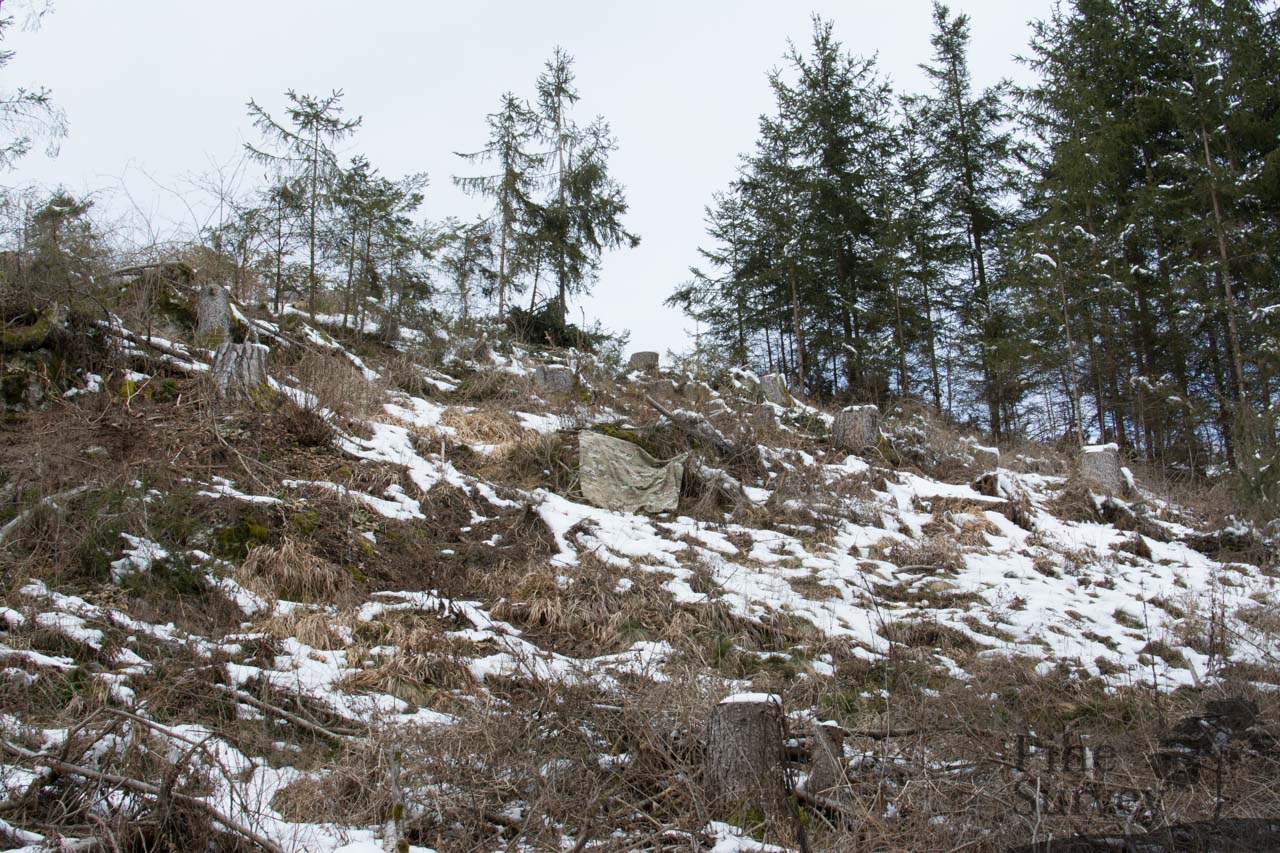
Multicam
Multicam
Here you will find Multicam again in optimal surroundings. Even though the pattern doesn‘t break up the silhouette with the contrast of a macro element, the colors do the trick. The main reason you can identify the cloth are the straight lines of the borders of the cloths.
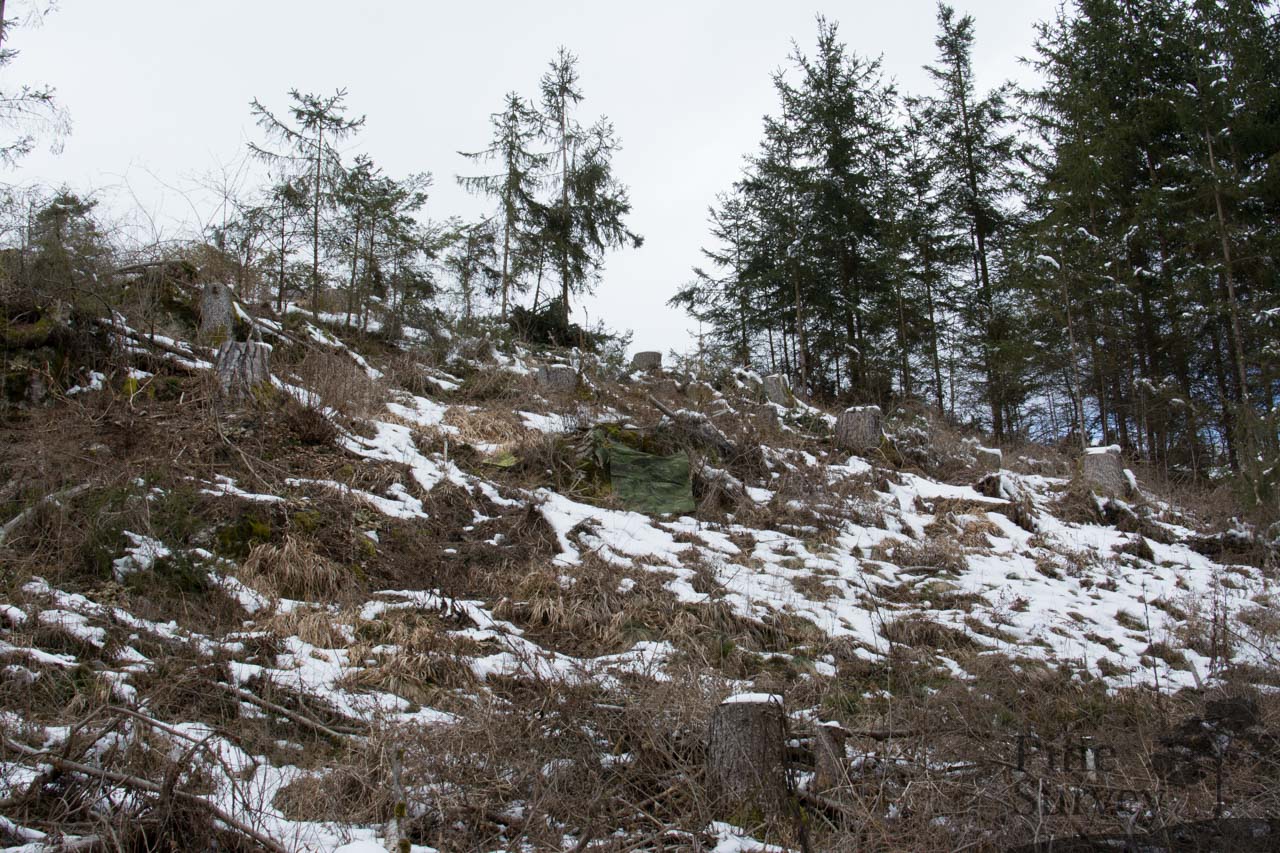
Multicam Tropic
Multicam Tropic
Multicam Tropic suffers from the previous problems again. It doesn‘t attract the eye like in the first picture, but fabricates a blue green tint. But: In the direct sunlight the macro elements finaly come into play and appear to be tiger stripe like. All in all it fits in this particular spot BECAUSE of its dark colors. One meter at the side would be a different story.
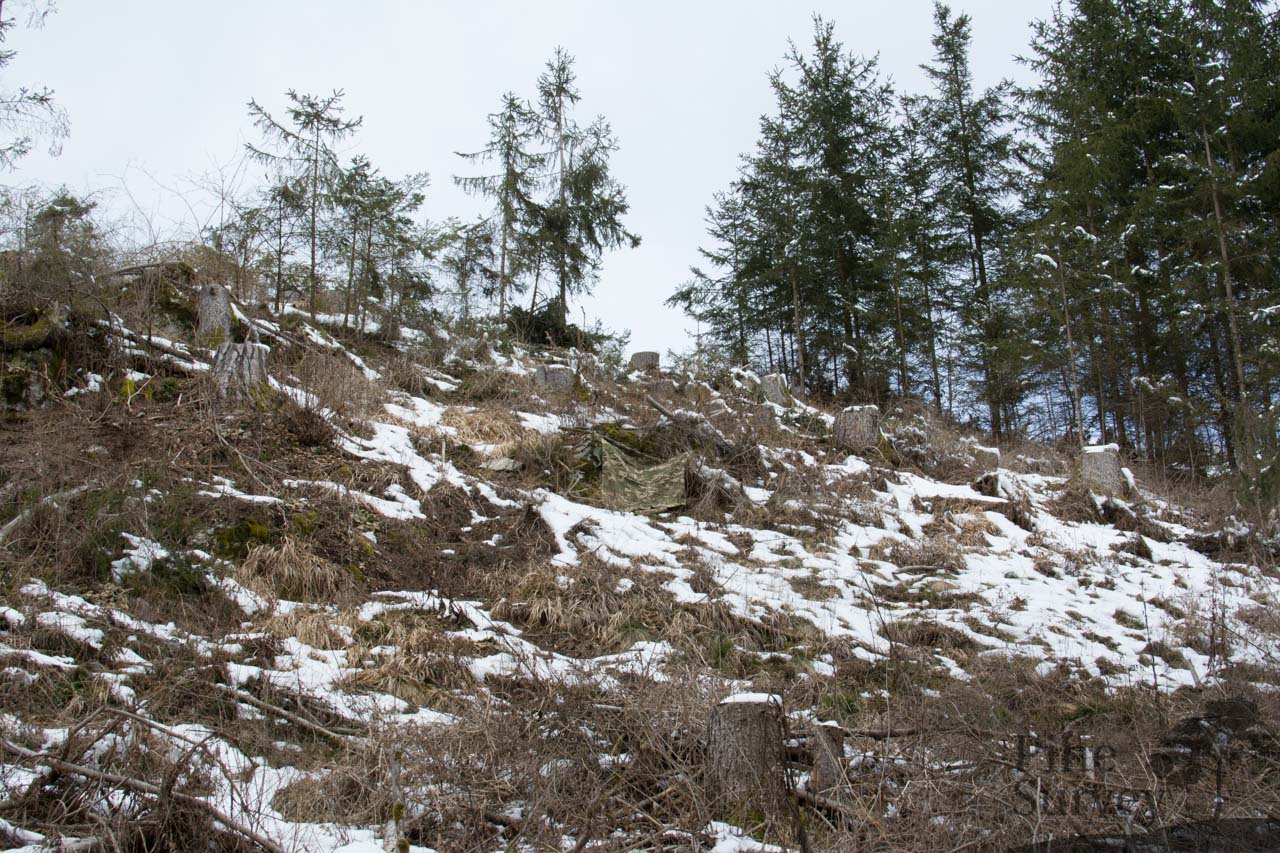
SloCam
SloCam
Again, SloCam scores with its contrast and colors. I think I do not need to write something – the picture speaks for itself.
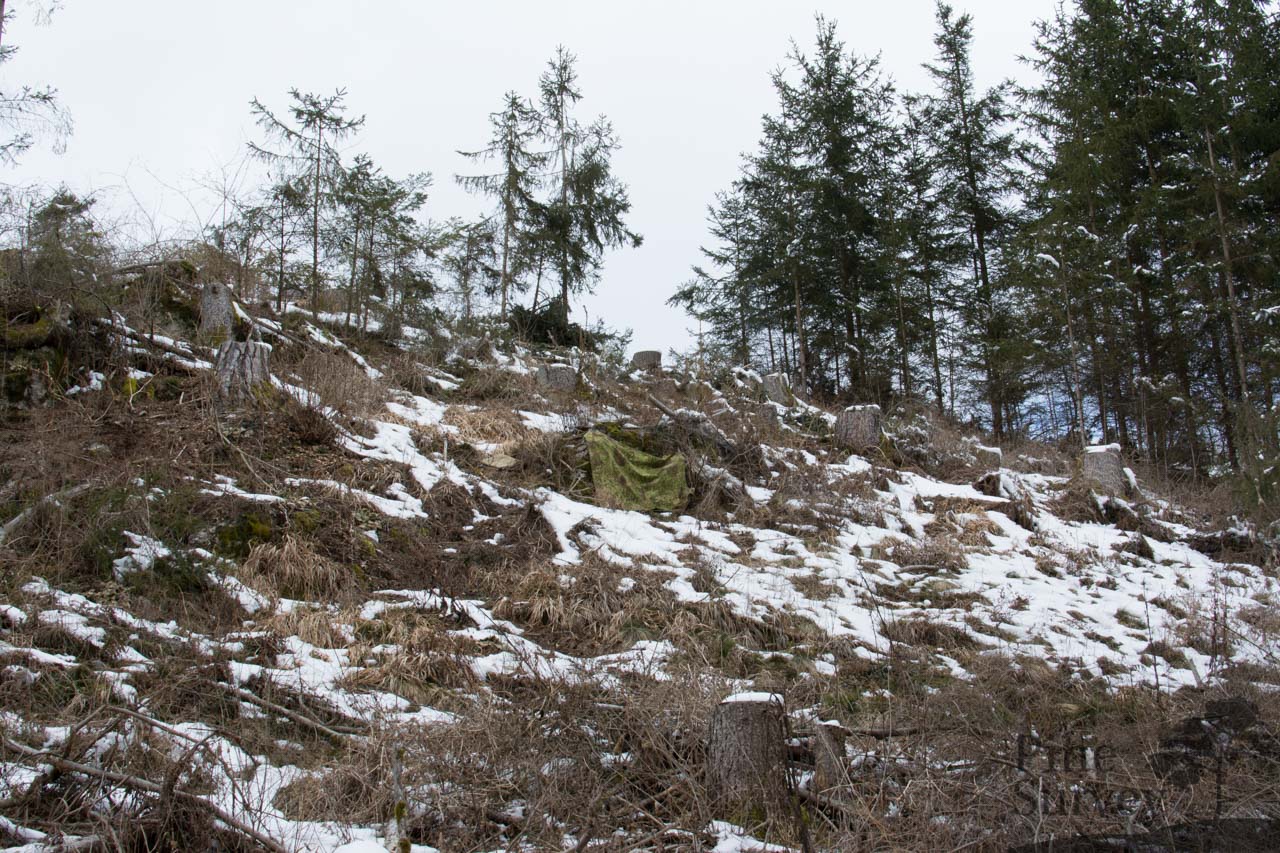
PenCott Greenzone
PenCott Greenzone
In the direct sunlight and the open slope PenCott Greenzone does not stand out as much as one might think, having the strong green colors in mind. The brown shades and the macro elements are working here quite well and defuse the green areas in the pattern.
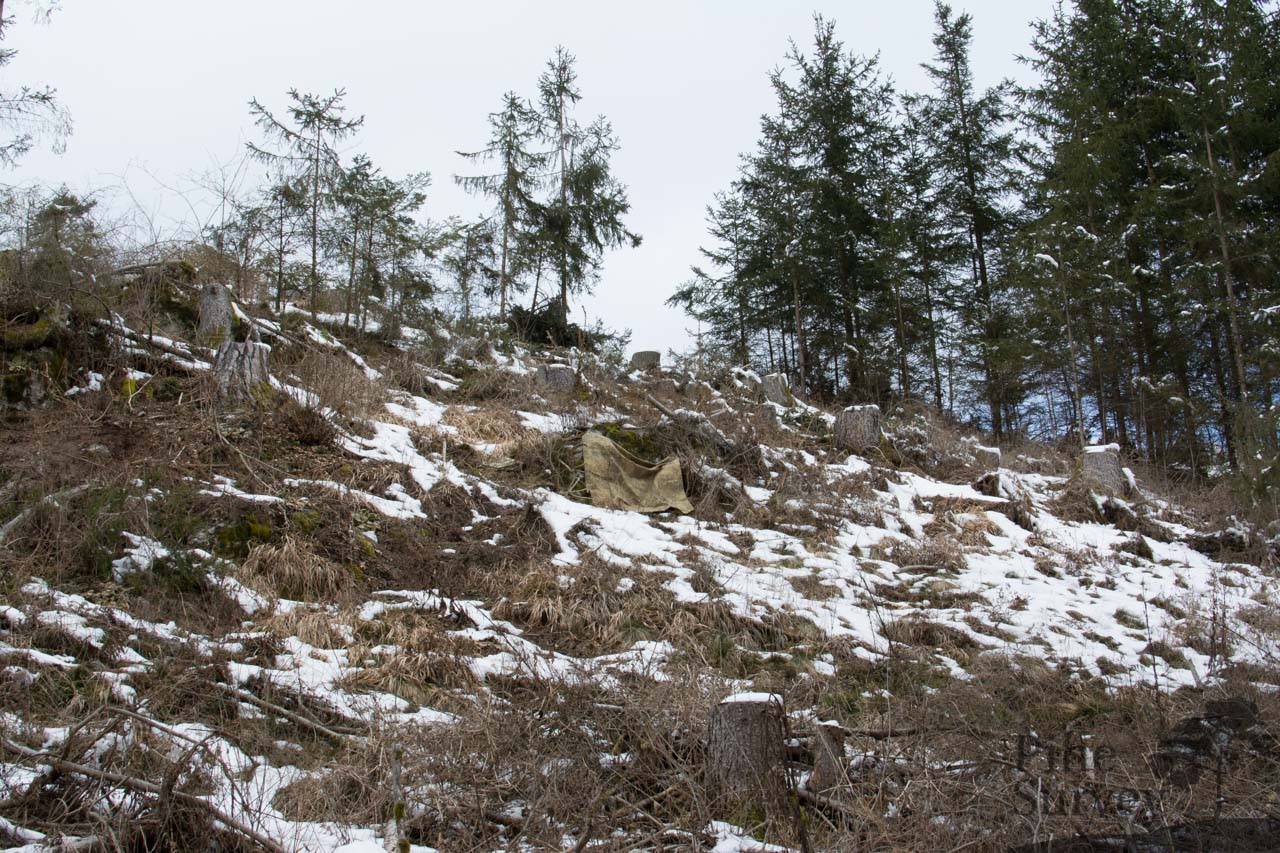
PenCott Badlands
PenCott Badlands
The brown shades of the old Badlands version are dominating and prohibit the macro elements from working properly. The pattern fits into the surroundings because of its colors, but the other patterns are working better because of the additional green shades. I really need to get something of the new Badlands to test it out.
Scenario 3
Open forest floor with little carpet of vegetation. Closed foliage roof. Distance to camera about 15m. The cloth is put over a backpack at the bottom of a tree. A possible lying position of a person in cover.
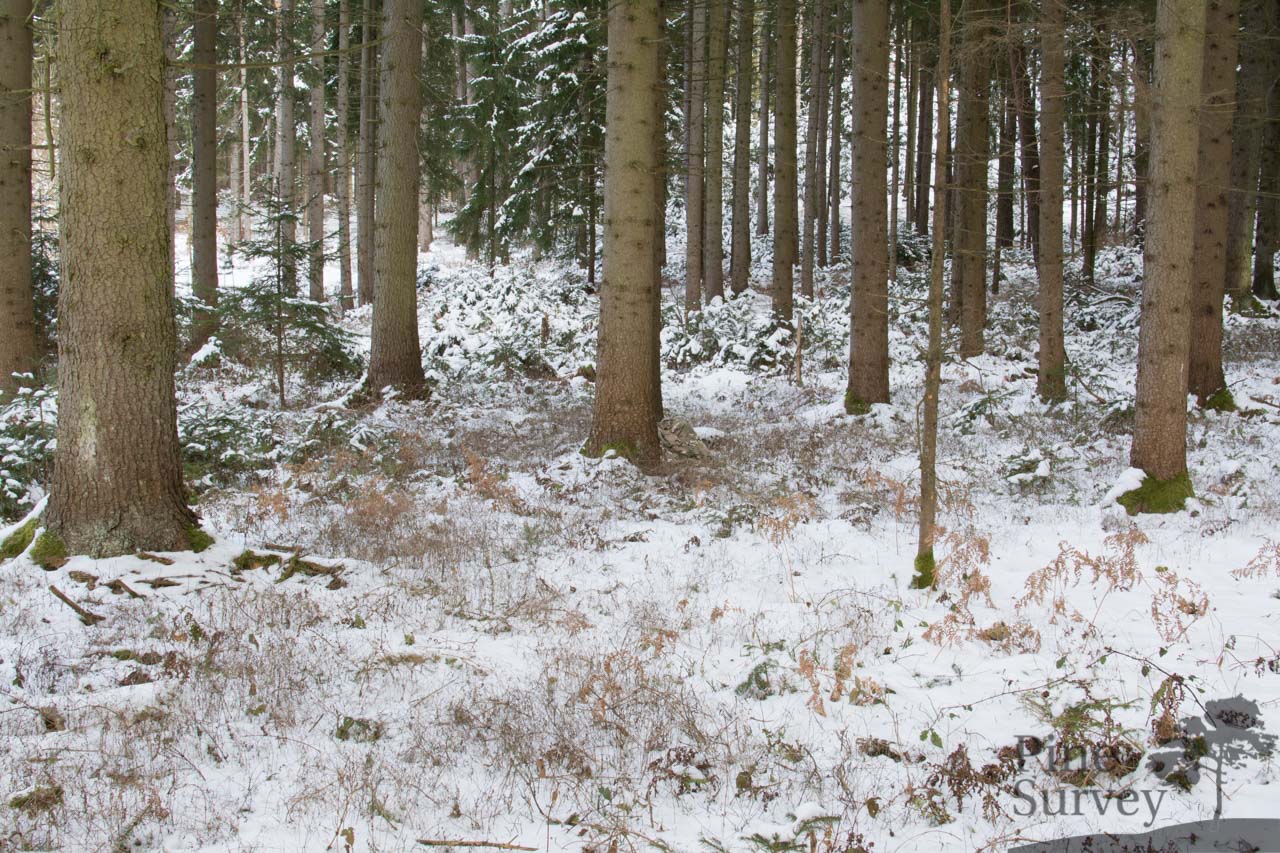
Multicam
Multicam
Multicam just blurs into the surroundings. The colors match the dead vegetation at the ground and in the surroundings.
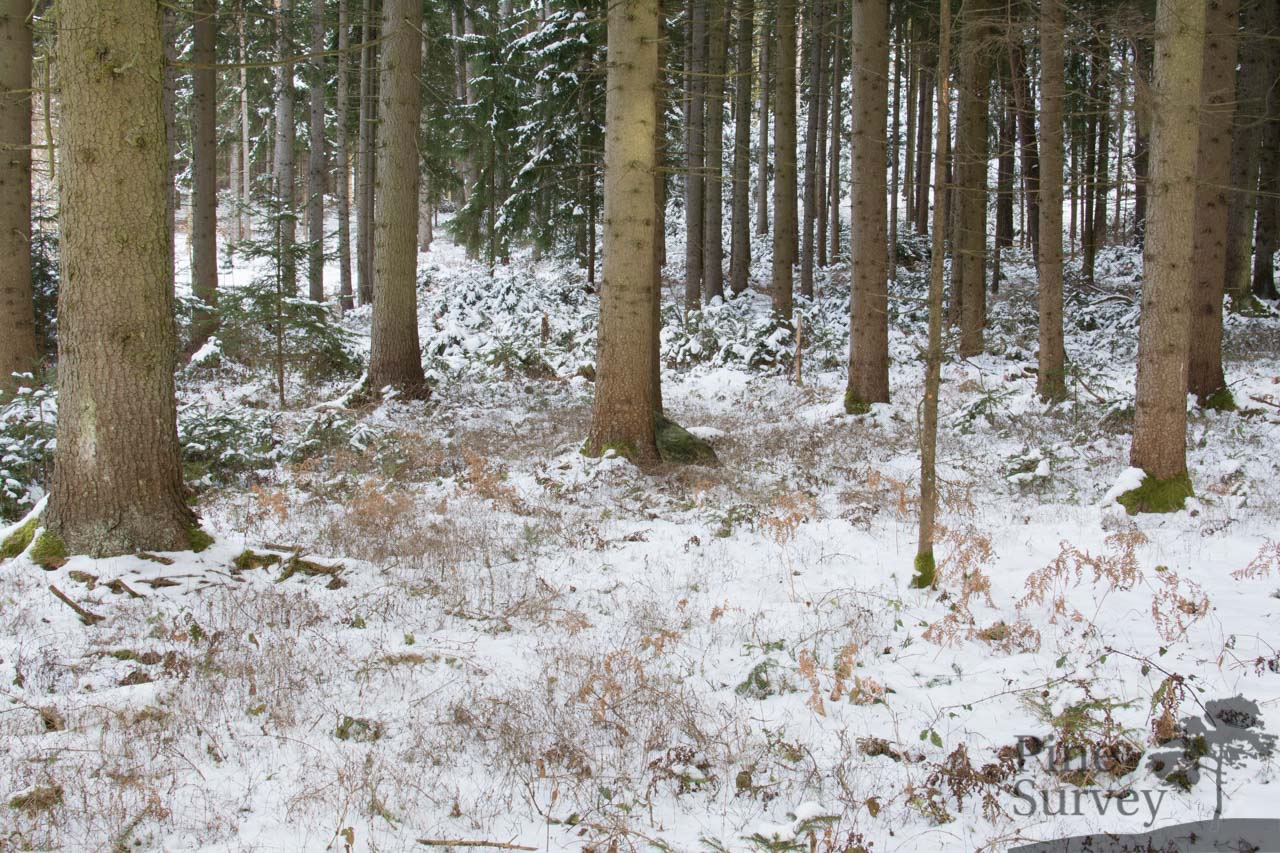
Multicam Tropic
Multicam Tropic
Multicam Tropic is just another dark blur, but the moss at the bottom of the trees comes to its advantage and helps in not being too unnatural.
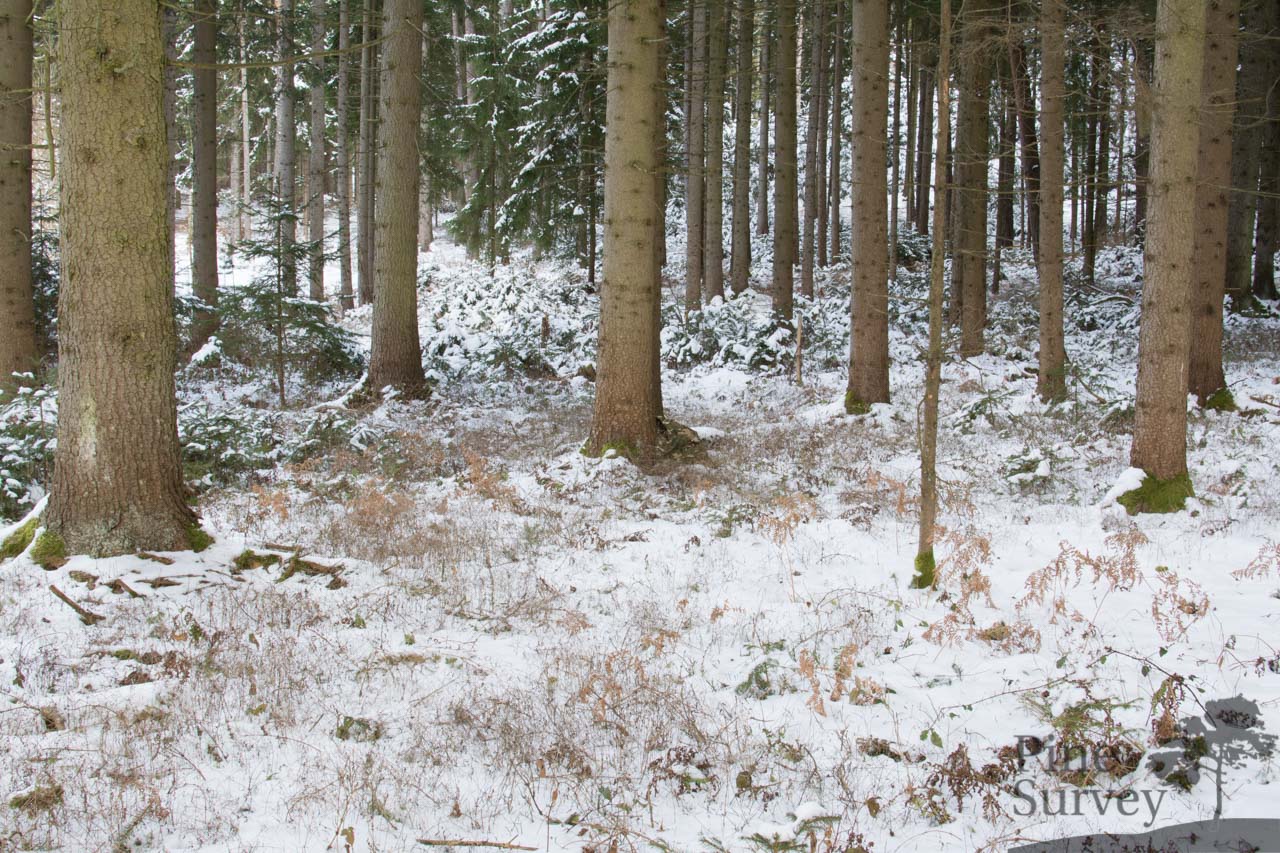
SloCam
SloCam
SloCam blurrs into the surroundings like Multicam. The contrasts of the pattern make it more diversified though and break up the silhoutte really nice. The colors are matching the surroundings as well as the dead vegetation, but also the evergreen needles under the snow.
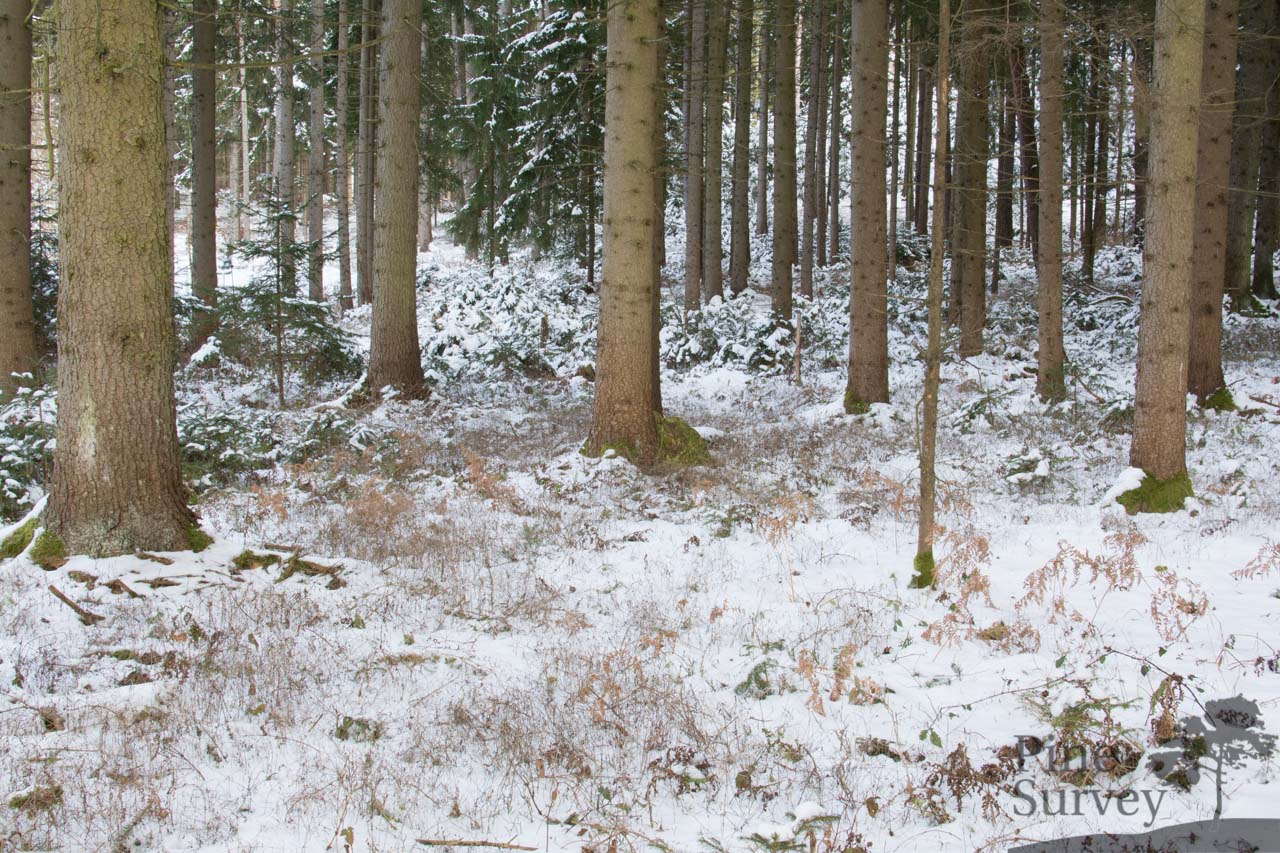
PenCott Greenzone
PenCott Greenzone
PenCott Greenzone was a complete surprise to me. It surely profits from the moss at the bottom of the tree and just disappears. The organic pattern seems to works also outside of its comfort zone.
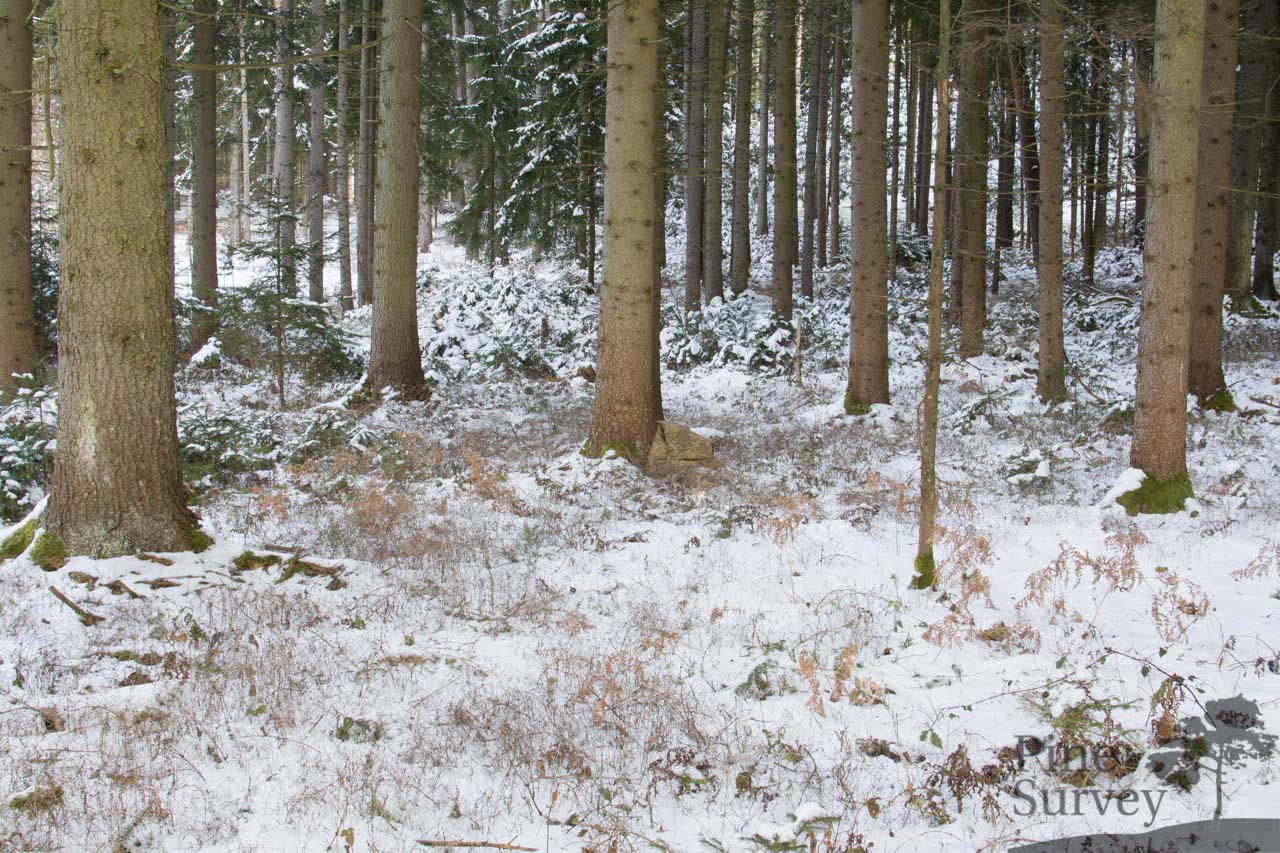
PenCott Badlands
PenCott Badlands
Badlands scores again its points because of the colors. The macro elements reflect the dead vegetation at the floor. Nevertheless it is the brightest of the patterns in this surroundings.
Conclusion
This series of pictures are showing the possible (un)effectivness of different camouflage patterns in autumn and winter time under the condition, that no winter camo is at hand. With the thought in mind that not every soldier is fielded with a winter camouflage pattern and possibly has to get by with his regular uniform in a specific pattern, I wanted to show that some patterns should not be underestimated.
In my opinion I was able to demonstrate the following:
At first PenCott Greenzone proved that it does not stand out in winter time as one might think. I was able to realize this one year ago on a snow free new years morning.

January 2014
Second: Multicam has a right to exist here in our temperate zone at least in winter, even though it is way too bright in any other time of the year – which is a result of its dedicated area of operation, being the arid environment.
Third: SloCam is a better universal pattern than Multicam. While Multicam is only usable in autumn and winter (in Europe!), SloCam is working during all four seasons at a a certain extent.
With Multicam Tropic green shades are predominant which is making it specific for only one area of operation. It is the same with PenCott Badlands only with the difference that Badlands has the advantage in winter and Tropic in summer. In summer the latter has to deal with a tough competition by Greenzone though.
—
All of the patterns were able to demonstrate their abilities to conceil and none of them stood out that much that one might argue that one is completely inept. I believe the right balance of green and brown shades is playing a huge role in this regard and how the human eye perceives the colors because of the surroundings.
As an example I would like to mention PenCott Greenzone, which appears primarily green but almost consists of fifty fifty brown and green tones. Once you enter surroundings which tend to be more brown, the brain changes the pattern into its invert or negative and concentrates on the browns primarily.
Coming to an end I am hoping I was able to give some further insights into the world of camouflage and was able to give some sort of assistance to the ones who are not sure which pattern to buy. If you are not able to get one of the winter patterns available, you should be able to determine which regular patterns are also able to work in winter.
Thank you for reading!
@J: I sincerely hope I was able to help you for your choice in the UK!

